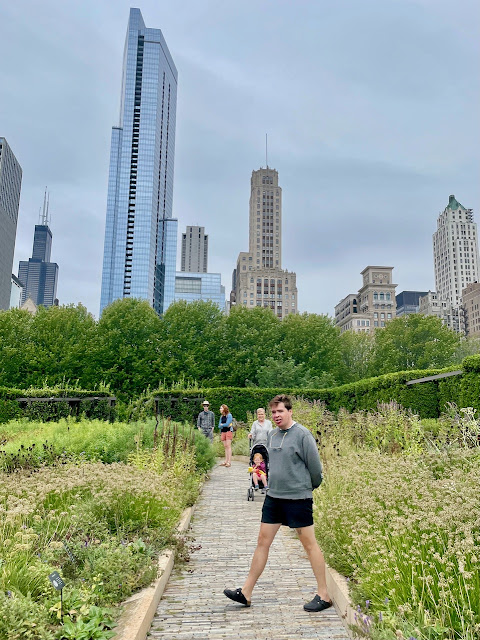Knowing that you love the earth changes you, activates you to defend and protect and celebrate. But when you feel that the earth loves you in return, that feeling transforms the relationship from a one-way street into a sacred bond.
Robin Wall Kimmerer, Braiding Sweetgrass
Our efforts to appreciate and enhance nature at Farm Dover go all the way back to our first season here when Ed had the vison to take all the cropped fields out of production and return them to native grasses and wildflowers. No more corn; no more soybeans. Instead we planted native seeds in the open meadows and began to intentionally tend to field and forest, making them healthier for all who make their home here. This work of tending to our land – so satisfying – gives structure and purpose to our days and fills us with joy.
In 2016, with help from Margaret Shea of Dropseed Native Plant Nursery, we planted our first bee garden, which really was just a flower-rich extension of the front meadow.
As the garden grew, we divided plants from it and moved them to the periphery of the meadows surrounding the house, adding color, structure and texture to the edges.
Once we got going, it was hard to stop. Recently, I've been feeling garden-giddy and compelled to create another garden. This time, I didn't choose the spot; it was chosen for me...
Last year, we ordered a dump truck full of natural hardwood mulch from Natural Products, located in nearby LaGrange. The driver did not want to get off our gravel drive and would need to dump the eight cubic yards (small mountain) somewhere near the driveway's edge. We picked a spot in the tall meadow grasses between the original bee garden and orchard and hastily pinned down a tarp. With amazing accuracy, he dumped the entire load in the center of the tarp.
It took us nearly a year to whittle down the pile, using it on all our gardens and around the planted bushes and trees. Once the pile was nearly gone, I peeked under the tarp to find a perfectly bare 12'x16' plot. It was like striking gold. We don't like to spray with herbicides, and to dig up an area this size in meadow grasses is no easy task. Our good luck: no need to spray or dig! We simply slid the tarp over to the next section of meadow and called for another load of mulch. I then put layers of newspaper down on the bare earth and spread three inches of mulch over it all. It was ready for planting.
I love dividing and moving perennials in the fall; it feels like shopping in my own backyard for free plants. Between our meadows and bee gardens, we have lots to chose from. We began by digging up some very tall ironweed from our fields and planting them in the back of the new space, adding some tall joe pye weed right next to the ironweed. Then I realized that I needed to give some thought to what to plant next. Seems I needed some inspiration...
Two weeks ago, my friend Pat Greer opened up her amazing gardens as part of Shelby County Co-op Extension's Good Neighbors Farm Tour. The day before the tour, I stopped by to drop off a large arrangement of compass flowers to welcome the visitors. Pat insisted on giving me a private tour of her nearly six acres of gardens. Regarding native plants, Pat has more passion, knowledge and energy than anyone I know. I came away with a wheelbarrow load of ideas that I wanted to try.
The second source of inspiration came from our recent weekend in Chicago, where we roamed the Lurie Garden, a three-acre botanical garden at Millennium Park designed by renowned Dutch garden and landscape designer, Piet Oudolf. (He also designed NYC's High Line.) The naturalistic plantings were stunning.
Not only are Oudolf's landscapes amazing works of art, but his painterly design sketches I'd gladly frame and hang on our walls. I find his shapes and circles "groovy."
So taking page from Piet Oudolf, I pulled out Uncle Eddie's 50-year-old box of Prismacolor pencils and set to work, creating my own groovy garden plan.
The new garden is now fully planted. It looks a bit sparse, only because we cut off most of the foliage so the transplants can concentrate on putting down good roots. The plants will spread, hopefully covering every square inch of the garden, blocking out weeds.
The privilege of working in this new garden this week is not lost on me. I find gratification in the process and peace and pleasure in every step along the way.
It will be next spring before I can discover if the garden design is pleasing. If not, I'll simply move the plants on to another spot and fill in with plants from elsewhere on Farm Dover. It's a never-ending cycle; one that transforms the bounties of this place and, along the way, transforms this gardener too.









No comments:
Post a Comment